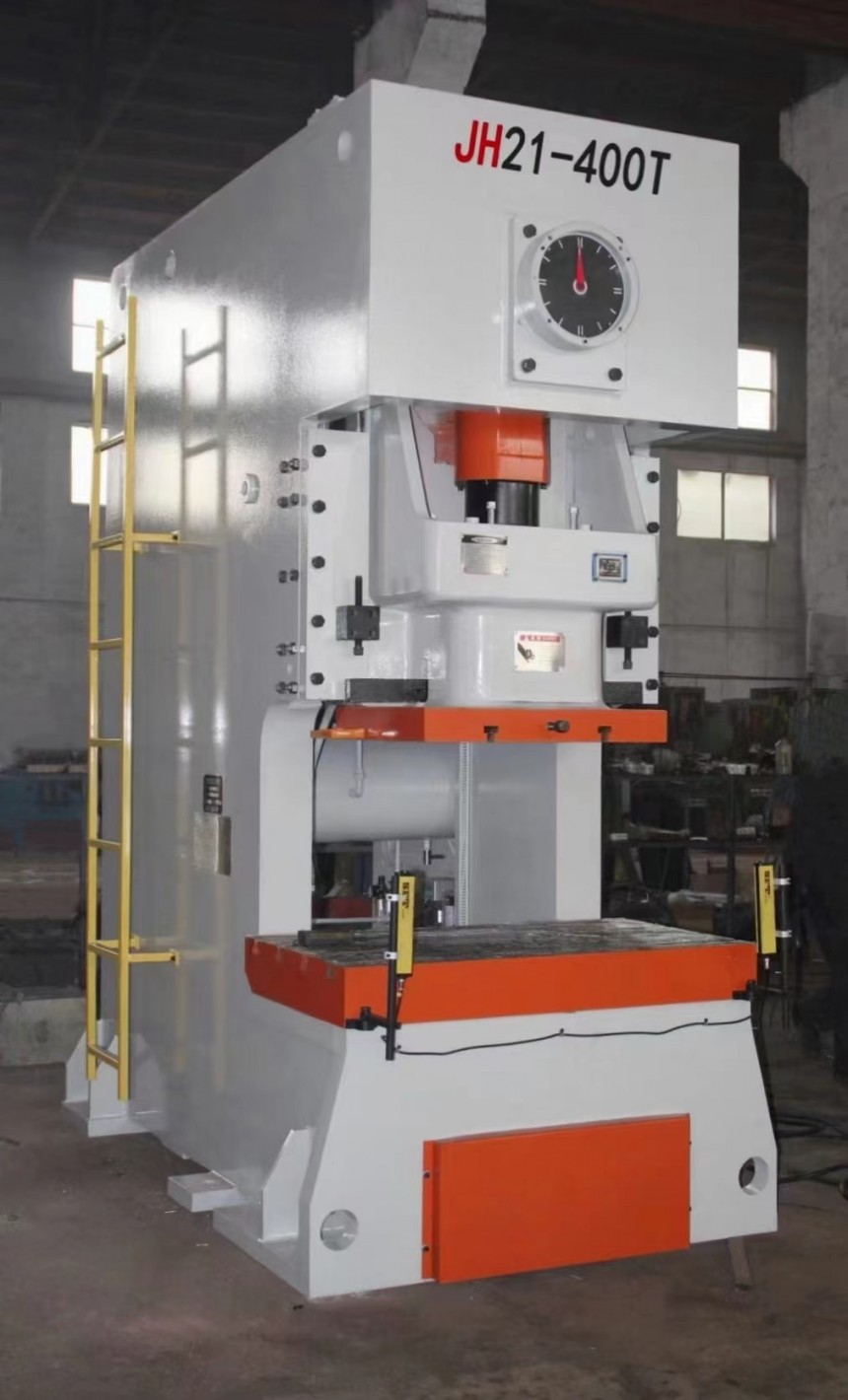

We are a professional punch press manufacturer with over 10 years of industry experience. Today, we would like to introduce you to the components of a punch press:

Punching machine is a kind of mechanical equipment that uses pressure to punch, form or stretch metal sheets, which is widely used in automobile manufacturing, electronic and electrical appliances, hardware processing and other industries. Its core function is to apply an instantaneous impact force to the material through a mold, causing it to undergo plastic deformation or separation. The performance and accuracy of a press depends largely on its structural design. A complete punching machine is mainly composed of body, transmission system, slide mechanism, control system and auxiliary devices. We also have mid-range machines We are a professional punch press manufacturer with over 10 years of industry experience. Today, we would like to introduce to you the component structure of punching machine:
1, Fuselage
The fuselage is the basic support structure of the press, which is usually made of cast iron or welded steel plate with high rigidity and stability. The top of the machine body is installed with transmission system, the middle of the machine is equipped with working table, and the bottom is equipped with vibration damping device. The design of the body directly affects the overall strength and processing accuracy of the press. The open body structure facilitates the installation of molds and material in and out, and is suitable for small and medium-sized stamping parts; the closed body is more rigid, and is suitable for large tonnage punching machines and high-precision processing.
2, Drive train
The drive train is the power source of the press and is responsible for converting the rotary motion of the motor into the linear reciprocating motion of the slide. Common transmission methods include crankshaft linkage, gear transmission and hydraulic drive. Crankshaft linkage is the most traditional form of transmission, through the crankshaft rotation drives the connecting rod, so that the slide up and down movement. Gear drives are usually used in large tonnage presses to improve torque and stability. Hydraulic presses use hydraulic cylinders to directly push the ram, with adjustable pressure and flexible stroke, suitable for complex molding processes such as deep drawing.
3, Slider mechanism
The slider is the core moving part of the press, directly connected to the upper mold, responsible for applying punching pressure. The guiding accuracy of the slide directly affects the processing quality, so it usually adopts precision guide rail or guide column structure. The motion characteristics of the slide (e.g. stroke length, speed and lower dead center position) can be controlled by adjusting the crankshaft eccentricity or hydraulic system parameters. Some high-performance presses are also equipped with slide balancing devices to reduce vibration and improve smoothness of motion.
4, Workbench and die fixtures
The workbench is the platform for installing the lower die, and needs to have sufficient load-bearing capacity and plane accuracy. Large punch press table usually with T-slot or threaded holes, to facilitate rapid positioning and fixing of the mold. Some precision punching machines are equipped with air cushion or hydraulic ejector device, which is used to release the workpiece from the mold after molding. Mold is the tool for punching machine to realize specific processing function, which is composed of upper mold (mounted on the slide) and lower mold (fixed on the table), and its design directly affects the shape and dimensional accuracy of the product.
5, Control system
The control system is the “brain” of the press, responsible for coordinating the operation of each part. The traditional mechanical press controls the starting and stopping of the slider through the clutch, while the modern CNC press adopts PLC or CNC system, which can realize the stroke adjustment, speed control and multi-station automatic processing. Safety protection function is an important part of the control system, including photoelectric protection, emergency stop button and two-hand operation device to ensure the safety of operators.
6, Auxiliary devices
In order to improve productivity and automation, punching machines are often equipped with a variety of auxiliary devices. The feeding mechanism (e.g. roller feeder or robot) can realize the continuous feeding of materials; the waste collection system is used to clean up the edges and corners after punching; and the lubrication device ensures the long-term stable operation of the transmission parts. In high-end stamping lines, these auxiliary devices usually form a linkage system with the main machine to realize unmanned production.
The structural design of a punch press directly affects its processing capability, precision and safety. With the progress of manufacturing technology, modern punching machines are developing in the direction of high speed, high precision and intelligence. Understanding its composition and structure not only helps to operate and maintain the equipment correctly, but also provides a basic basis for selection and application. Whether it is simple punching processing or complex precision molding, reasonable structural configuration is the key to ensure the efficient and stable operation of punching machines.
If you are interested in punching machine, please contact us.
 Address:Room 1202, Detaitang Building, No. 118 Huaguang Road, Zhangdian District, Zibo, Shandong
Address:Room 1202, Detaitang Building, No. 118 Huaguang Road, Zhangdian District, Zibo, Shandong WhatsApp:+8615653328535
WhatsApp:+8615653328535 Wechat: +8615965331535
Wechat: +8615965331535  E-mail:zs@sdsmachinery.com
E-mail:zs@sdsmachinery.com